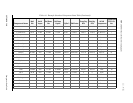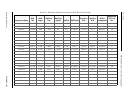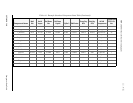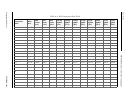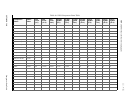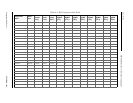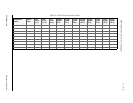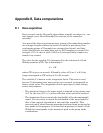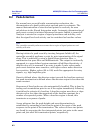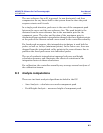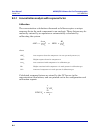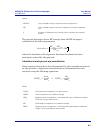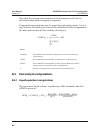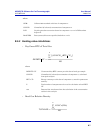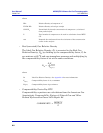
B-1
A
Appendix B, Data computations
B.1 Data acquisition
Every second, exactly 50 equally-spaced data samples are taken (i.e., one
data sample every 20 milliseconds) for analysis by the controller
assembly.
As a part of the data acquisition process, groups of incoming data samples
are averaged together before the result is stored for processing. Non-
overlapping groups of N samples are averaged and stored, and thus
reduce the effective incoming data rate to 40/N samples per second. For
example, if N = 5, then a total of 40/5 or 6 (averaged) data samples are
stored every second.
The value for the variable N is determined by the selection of a Peak
Width parameter (PW). The relationship is:
where PW is given in seconds. Allowable values of N are 1 to 63; this
range corresponds to PW values of 2 to 63 seconds.
The variable N is known as the integration factor. This term is used
because N determines how many points are averaged, or integrated, to
form a single value. The integration of data upon input, before storing,
serves two purposes:
• The statistical noise on the input signal is reduced by the square root
of N. In the case of N = 4, a noise reduction of two would be realized.
• The integration factor controls the bandwidth of the chromatograph
signal. It is necessary to match the bandwidth of the input signal to
that of the analysis algorithms in the controller assembly. This
prevents small, short-duration perturbations from being recognized as
true peaks by the program. It is therefore important to choose a Peak
Width that corresponds to the narrowest peak in the group under
consideration.
NPW=



